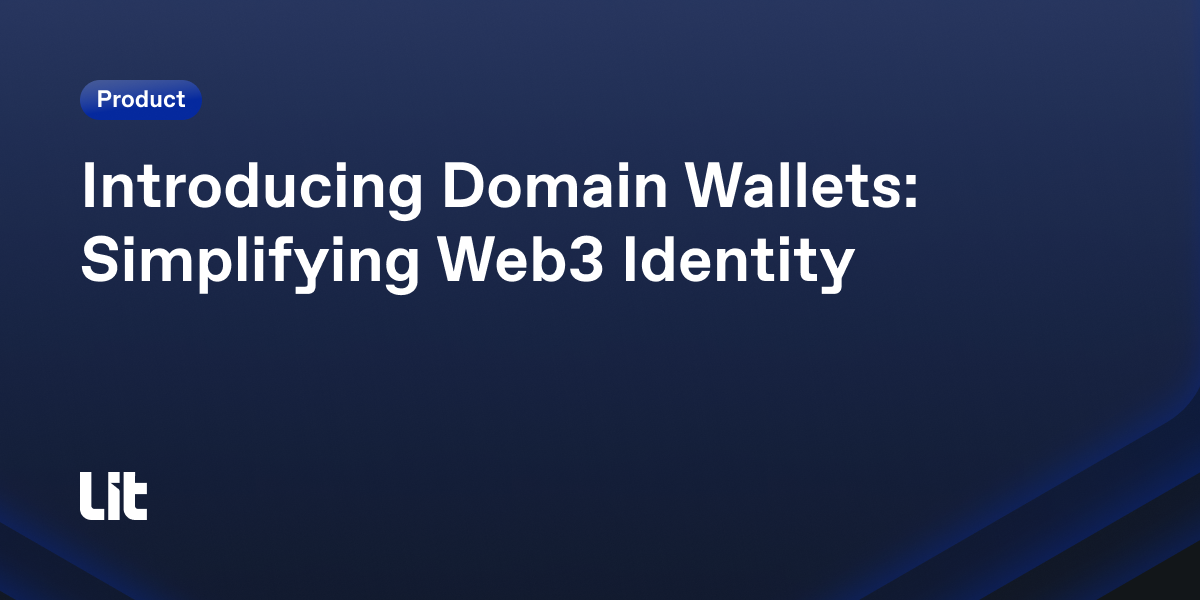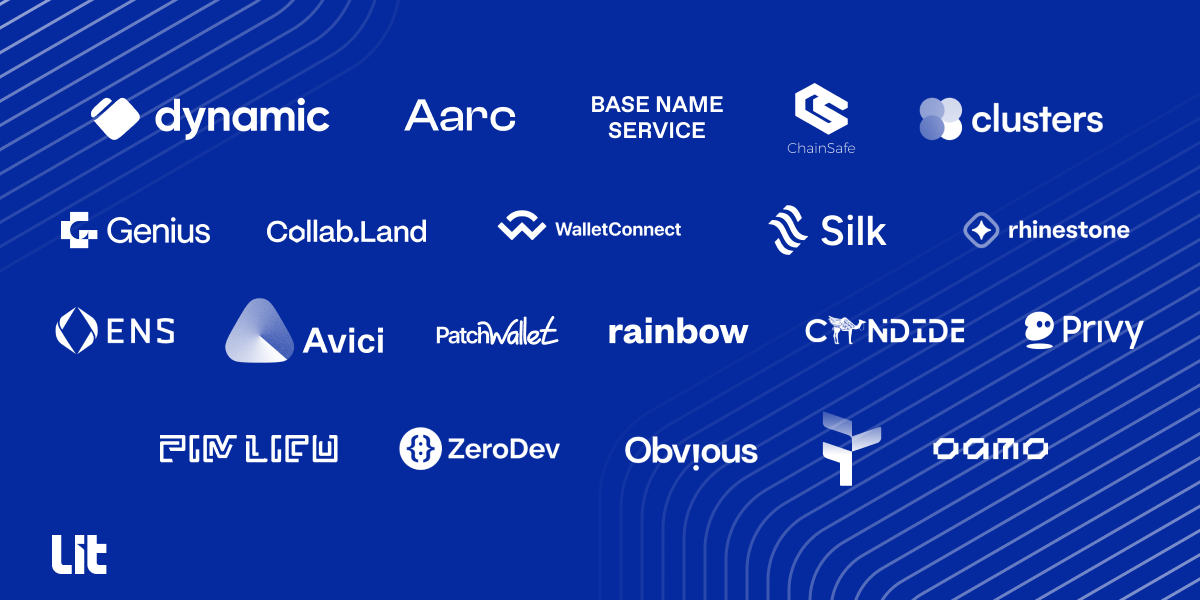Domain Wallets: Simplifying Web3 Identity

When crypto domains are combined with wallets, web3 accounts become portable, independent of interface.
The team behind Lit Protocol, along with an intent to explore from partners including Aarc, Avici, Base Name Service, ChainSafe, Clusters.xyz, Collab.Land, Dynamic, Ethereum Name Service, Genius, Oamo, Obvious, Patch, Pimlico, Privy, Rainbow Kit, Rainbow Wallet, Rhinestone, Silk, Tria, Candide, WalletConnect, and ZeroDev, are excited to introduce an open standard that will simplify and unify web3 identity - Domain Wallets.

You can view the chain agnostic improvement proposal here.
Domain Wallets combine crypto domains (like alice.eth) with crypto wallets to enable a powerful new user experience, the ability to Login With Name. Now, instead of long hexadecimal addresses, users can simply use their domain name to log into web3 apps, send crypto, sign messages, and more. This standard completes the human readable web3 identity, a process initially started by the Ethereum Name Service.
Try the demo here.
With the demo, you can create a new domain for testing or connect a wallet for sign in to your existing crypto domain.
How It Works
- A crypto wallet or provider is added as the "authenticator" to a crypto domain NFT text field. This one-time setup transforms the domain into a Domain Wallet.
- Web3 apps, login modals, and wallets add a "Login With Name" option alongside other wallet options.
- Users simply type in their domain name (e.g. alice.eth) to log in. The login modal looks up the authenticator on that domain and prompts the appropriate login flow.
Intuitive, Interoperable, Extensible, Powerful
Domain Wallets enable personal web3 accounts to be used everywhere. The standard works with any crypto domain NFT on any blockchain with any compatible authenticator, including managed keys, self-custody keys, and smart accounts.
In addition to enabling a universal web3 identity, Domain Wallets can also be used to enable peer-to-peer encrypted messaging and user owned data (because they’re keys!) and well as collective ownership by groups / DAOs (because domains are NFTs!).
Add “Login With Name” to Your dApp
Login With Name is currently being evaluated as a chain agnostic improvement proposal (CAIP). If you want to support this login flow in your dApp prior to this flow being standardized across all login modals, all you need to do is integrate the Login With Name WAGMI connector in a few easy steps using this SDK.
Creating Domain Wallets With Claimable Keys
When using systems like Lit Protocol to manage the key material for a Domain Wallet, you can use claimable keys to enable the following web3 onboarding flow:
- Alice knows that Bob’s birthday is coming up and wants to get him into crypto.
- Alice purchases BigBob.eth, makes it a Domain Wallet associated with Bob’s email, and sets it up so that Bob can claim his account using his email.
- On Bob’s birthday, Alice sends him a link to claim the Domain Wallet. Bob clicks the link, authenticates with his email, and now he’s able to use web3 fully with BigBob.eth, without ever downloading anything, saving a secret, or having to trust a centralized custodian!
Lit.id
The waiting list for Lit.id is now live! Primarily, Lit.id is an implementation of Domain Wallets created using CAIP 275. The goal of Lit.id is to provide everyone with an open source decentralized key interface that they can use to interact with web3 without limits.
Sign up for the waitlist here.

